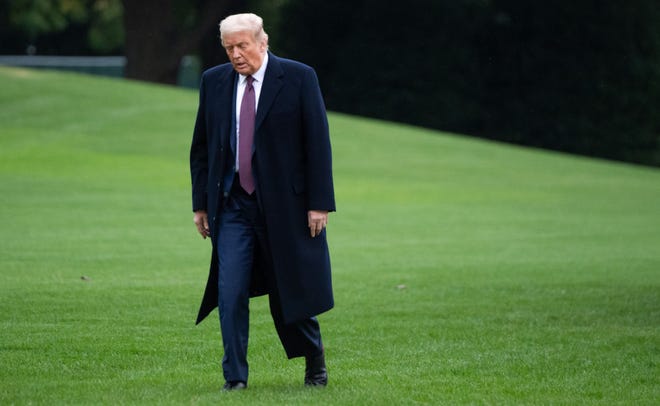Trump and COVID-19: Facebook, Twitter and YouTube race to contain disinformation about president’s diagnosis
Within minutes of President Trump’s shocking announcement that he tested positive for COVID-19, speculation and conjecture swarming social media platforms gave way to a flood of outright falsehoods, an unprecedented challenge to Facebook, Twitter, YouTube and others already struggling to keep up with the relentless misinformation onslaught with Election Day just weeks away.
Platforms say they immediately started tracking misinformation after the president said he and the First Lady had tested positive.
Facebook says it’s removing content that violates its policies and it’s working with more than 70 fact-checking organizations to assess and label misleading content.
Fact-checkers have already knocked down the hoax that an airborne command center was readying for an invasion before the announcement. They also debunked another that claim that an episode of “The Simpsons” showed Trump in a coffin.
Trump, QAnon, Russia:Facebook, Twitter, YouTube brace for a turbulent election and post-election cycle
Social media misinformation:Facebook bans ads that seek to delegitimize the election or make false claims about voting
On social media:Conspiracy theories abound from QAnon, critics after Trump’s positive COVID-19 test
YouTube says it also reacted within minutes, surfacing legitimate news sources on its home page and making sure millions of search results led viewers to authoritative content. “Watch next” panels were also carefully combed.
Twitter declined to comment on specifics. Its election team “conducted scenario exercises internally on numerous, specific election scenarios,” the company said. “We’re committed to protecting the public conversation, and work to be nimble in our approach.”
The problem? Many don’t trust the official story and the online conversation is quickly spinning out of control.
“QAnon thinks Trump is laying low because the great awakening is finally about to happen. I was on the Donald message board and they think the deep state gave Trump COVID at the debate. There are some MAGA folks who are saying that Trump is just going to come through this and everyone will realize just how strong he is. And then a lot of people on the left who always assume Trump is playing 3-D chess who are like oh he’s trying to avoid the debate or releasing his tax returns,” said Melissa Ryan, CEO of CARD Strategies, a firm that helps organizations counter-disinformation and extremism.

Facebook and others have made sweeping changes in the crucial run-up to the November election to try to limit voter misinformation and undercut Trump’s disinformation campaign about election fraud. Among the changes, Facebook has stepped up its vigilance for posts that try to dissuade people from voting, declare premature victory or delegitimize the election.
An unprecedented number of Americans are expected to vote by mail amid the coronavirus pandemic.
Researchers at Cornell University this week found Trump was the single largest spreader of falsehoods about the pandemic, with mentions of the president making up nearly 38% of misinformation.
As social media platforms scramble to contain the latest wave of misinformation related to the president’s diagnosis, Ryan says they have no one to blame but themselves after missing or ignoring years of warning signs as bad actors tapped the power of social media to spread virulent falsehoods, conspiracy theories and hoaxes. Hands-off policies to world leaders with loud bullhorns, including Trump, as disinformation with dangerous consequences ran rampant on their platforms worsened the situation, Ryan said.
“They definitely had a role to play in creating this mess we are now in, where no matter what your political views are, you are skeptical that the story is the story,” she said. “I don’t ever want to tell tech companies to stop trying. But it’s also important to recognize how we got here. If they are scrambling it’s because of their own refusal to deal with this for so long.”
*** This article has been archived for your research. The original version from USA TODAY can be found here ***


